Definition of storage logistics: We define storage logistics, such as the management and operations necessary for the reception, storage, and movement of the products of an online store.
E-commerce, like any other type of business that sells physical products, needs to have control of the stock of its products. Know how many units are left of a certain article. The moment in which a product is out of stock, or where the store is located. These are some of the questions that online stores ask themselves every day.
These questions are answered in adequate storage logistics and inventory control.
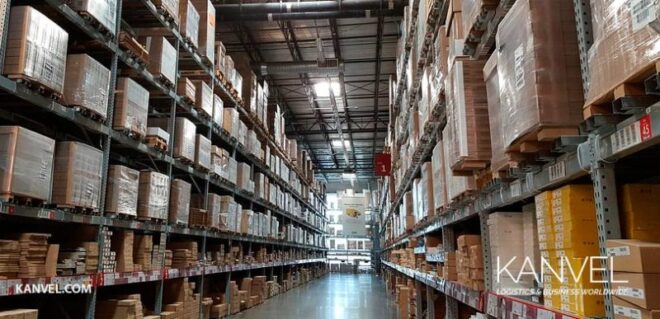
Storage logistics definition
Warehouse Management
From their point of origin, until they leave e-commerce. All the tasks carried out by the online store for the supply, storage, and access to the products of its warehouse would, therefore, be included in the storage logistics.
- All the tasks of warehouse logistics seek to achieve a series of objectives. How it can be to maximize the space.
- Minimize inventory costs
- Reduce the routes in the picking process.
- Perform all store operations in the shortest possible time.
- Avoid stock breakages or guarantee the supply of products.

Logistics and storage
What is the warehouse?
The classification of the warehouses according to their degree of mechanization; not all warehouses have the same degree of mechanization, mainly because not all goods can be treated with the same mechanical means, therefore the warehouses according to their degree of mechanization in conventional warehouses, high-density warehouses, and automatic warehouses.
Conventional stores: Those whose height does not exceed 10 meters in height. And that they are equipped with shelves and simple means for the internal transport, of the type of a forklift truck, which forces that the distance between shelves is greater due to the maneuverability of the forklift.
Due to the importance of forklifts (forklifts) in the actions to be carried out in warehouses, we can classify the warehouses depending on the use of these cranes in:
Warehouses that use counterbalanced forklifts
The height of the shelves can not exceed 4 meters in height which are the length of the mast of the conventional forklift. The width of the corridors will be a function of the maneuverability of the truck and the weight of the load to be handled, being normal width of about 3.5 meters, although if some type of accessory for the truck is needed, this width could reach be older
Warehouses using retractable mast forklifts
The use of forklift trucks of the retractable mast, allows stores to gain in height since already mast can reach 10 meters in height, so unlike conventional trucks the mast cannot be tilted, it is also reduced the width of the corridors, since by design it allows the mast to retract on lower guides that are introduced in the chassis of the machine, being able to be the width of the corridors of 2.5 meters.
Drive-thru storage
Conventional warehouses with drive-in and drive-through shelves: The drive-in and drive-through shelves are ideal for storing large quantities of heavy goods with a small variety of items. The shelving system combines the advantages of block stacking and stacking of shelves: compact use of space with high stacking heights and care of stored goods.
Before entering the desired channel, the truck raises the pallet to the level of the desired shelf level. The truck must not be wider than the pallet. The stacker with a transversal seat is very appropriate for this job since it also offers the driver good visibility in reverse.
These types of shelves are capable of storing several load units, one behind the other, distributed in-depth and on two brackets.
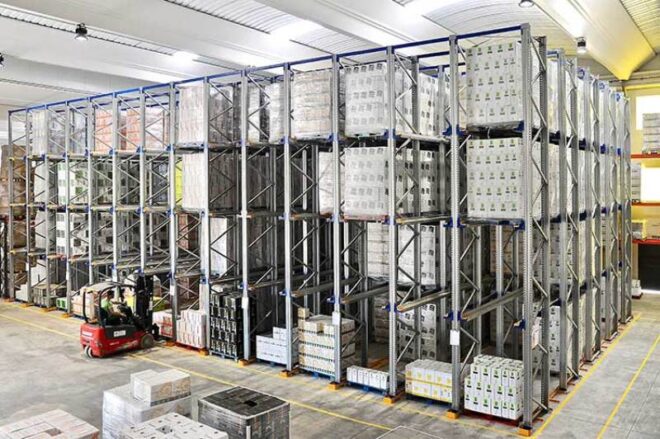
Industrial Racks
For storage and storage, one cycle must be maintained per shelf module, from top to bottom (and vice versa).
The trucks have the possibility to enter the shelving modules. If it is a drive-in bookcase, it can only be accessed from one side, the Lifo method, that is, the merchandise that first enters the store is the first one to leave.
On the other hand, with a drive-through shelf it can be stored on one side and, simultaneously, stored on the other side, the Fifo method, that is, the last merchandise that has entered the warehouse is the first one that comes out.
For this reason, the performance in the shipment of goods from the drive-through shelves is higher than that of the drive-in shelves.
Dynamic Rack
Warehouses equipped with dynamic shelves: The warehouses equipped with dynamic shelves can be considered to constitute an intermediate stage toward the systems in which the product flows to the operator without it having to move.
The FIFO principle is applied (first palette that enters, first one that leaves). The pallets are moved by slightly inclined rollers.
- They present the possibility of incorporating small reducing motors or air cylinders for the drive of the roller rows.
- They are recommended especially for intermediate warehouses, shipping areas, etc.
- They are recommended for homogeneous and perishable products.
- They provide organized storage for a quick location and with them, the displacements of the trucks are minimized.
- Increase the number of articles of direct access, greatly reduce the trajectory times to the product and downtime, reduce the superfluous areas.

High-Density storage
High-density warehouses: They require the use of specific means in order to achieve the highest possible density of packages located per square meter of storage area.
- High-density warehouses require shelves adapted to the dimensions of the packages.
- The dimensions of the corridors for the same machine must be the same.
Due to the difficulty to use material handling equipment outside the high-density areas, it implies the use of very specific machines and not conventional means, trilateral forklifts are generally used.
Due to the characteristics of this type of warehouse, there is a high demand in terms of the resistance and flatness of the floor and the leveling of shelves so that it is possible to maneuver the trucks safely.
Smart Warehousing
With this type of warehouse, total accessibility to the products and high use of the volume of storage, and optimization of surfaces and routes are achieved.
The warehouses, due to the use of space, have a normally high height and are therefore reduced in the maneuvering corridors. These warehouses are usually used in companies that have a dimensional homogeneity of the merchandise and that present the impossibility of having a larger storage surface.
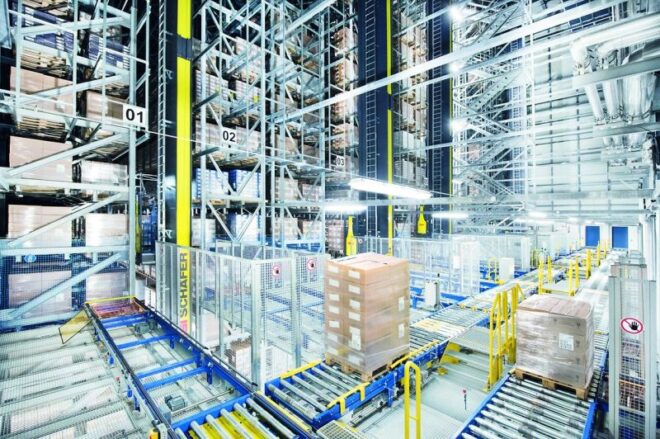
Warehouse Automation
Automatic warehouses are structures, generally, high-rise, where the storage elements and the maintenance elements are integrated and controlled by a computer system.
Depending on the size of the cargo, we can distinguish two types of warehouses.
Modular Rack
If the load is large, they are called ASRS, meaning, in this case, loads greater than one pallet.
This type of warehouse usually exceeds 35 meters in height, and is usually formed by self-supporting structures, which support all the loads of the structure of the building.
They are recommended for companies with a high rotation of articles, a very wide range of references, of homogeneous units of pallet volume or higher where the available surface requires high storage heights.
Mini loader
If they are used for small units, they are called “Mini-Load”.
When using smaller cargo volumes than in the case of ASRS, the height of these warehouses does not usually exceed 12 meters in height.
They are recommended for articles of low volume and a high number of references. With a very high movement of articles.
Stacker crane
In both cases, when the order is given to the computer system to locate or remove material, it does so through the stacker crane.
The advantages of this type of warehouse lie in the optimum use of the available land, the absolute control of the stock, and the reduction in direct workers dedicated to storage and maintenance.
However, they have the disadvantage of having to support a very high initial investment, the need to implement a very robust computer system, and the maintenance costs.
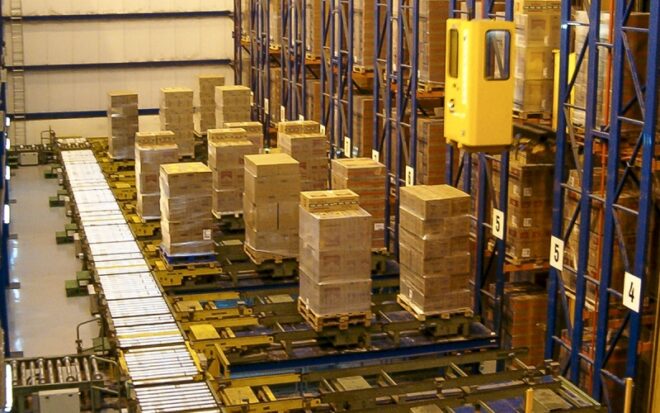
Importance of storage in logistics
Storage is the activity of storing products in warehouses and logistics centers. Its function is to provide a constant supply of goods to the market to fill the temporary gap between producers and consumers. It also plays an important role in maintaining quality in souls.
Warehousing and logistics are two different sides of the same coin. Warehousing is the safe & economical storage of goods, inventory, information, etc. within a specified area or building. Logistics is generally the detailed organization and implementation of a complex operation in different management tomes.
Logistics focuses on transporting goods while supply chain focuses on the finished products and/or customers. Logistics has to do with the coordination and movement of goods. The supply chain involves multiple facets such as operations and procurement that keep a company running smoothly.
It may involve warehouse pickup, packaging, and labeling. There are many variations depending on the client, but the most basic services provided are storage and warehousing, order processing, pick and pack, shipment of product, returns and exchanges, call center, invoicing, and order administration.
In the simplest possible terms, logistics may be defined as the detailed planning, organization, management, and implementation of complex operations. In many industries, including warehousing, logistics also extends to the flow of both physical goods and information.
A warehouse is a place for storing large amounts of products (wares) in logistics, a place where products go from the manufacturer before going to the retailer while warehousing is the act of storing goods in a warehouse.
The most read
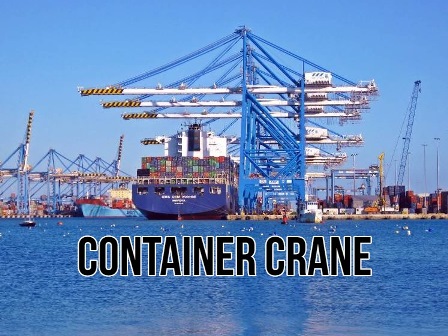
Container Crane
Container cranes consist of a supporting framework that can traverse the length of a quay or yard on a rail track. Instead of a hook, they are equipped with a specialized handling tool called a spreader.
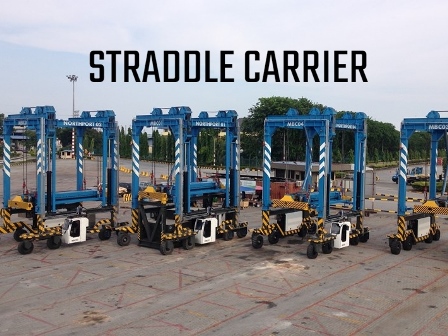
Straddle Carrier
Globalization combined with the success of containerization has brought about tremendous increases in the transportation of containers across the world.
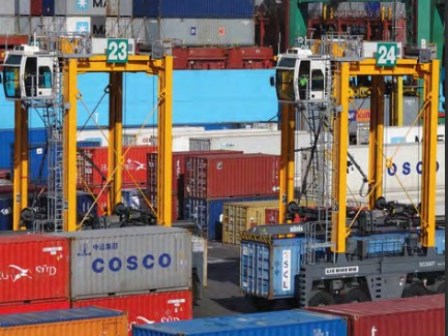
Automated Stacking Cranes
One of the basic infrastructures for the handling of merchandise and ships in all types of ports is the mechanical automated Stacking Cranes.
